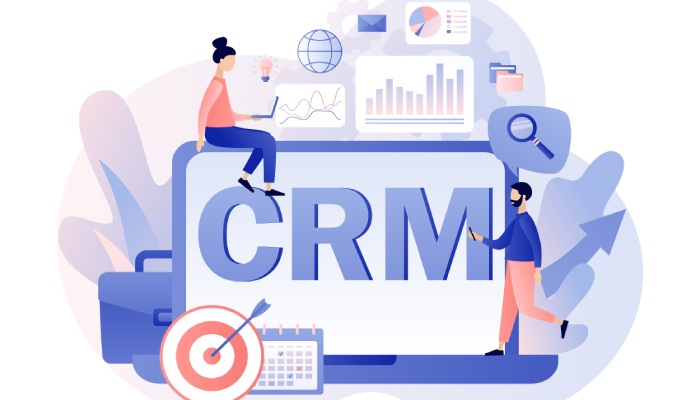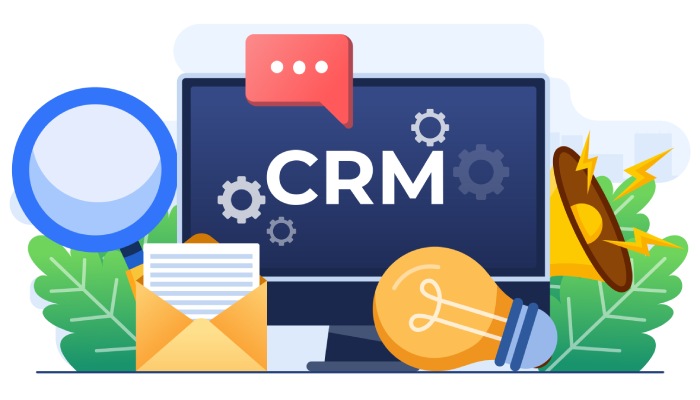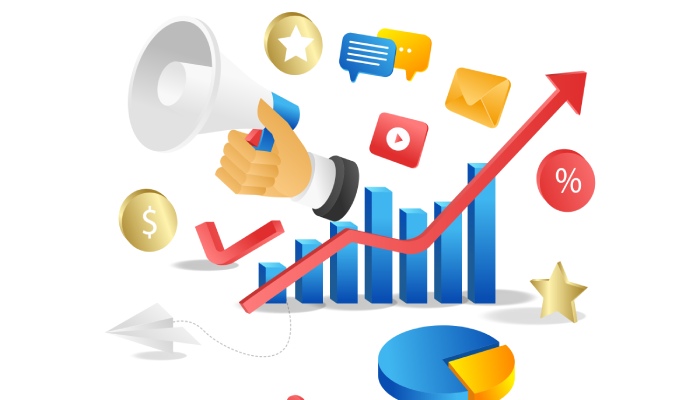The Ultimate Guide To B2B Sales Prospecting Tools And Software For 2025
B2B sales prospecting in 2025 is no longer just about cold calls and email blasts—it’s about leveraging intelligent tools to identify, engage, and convert the right leads. With advanced AI, automation, and data-driven insights, businesses can streamline their outreach and maximize conversion opportunities.
Prospecting software now integrates seamlessly with CRM platforms, enabling sales teams to personalize communication at scale. The right tools can significantly cut down research time, improve lead quality, and boost overall sales efficiency. This guide explores the best B2B sales prospecting tools and software for 2025 to help businesses stay ahead in a competitive market.
Introduction to B2B Sales Prospecting and Its Importance
In the dynamic landscape of B2B marketing, sales prospecting remains a cornerstone of effective business development. It serves as the engine for lead generation, enabling organizations to identify and engage potential clients through well-structured sales prospecting strategies. As companies increasingly embrace sales automation and multi-channel outreach, the demand for robust tools to streamline workflows and optimize sales funnels intensifies.
B2B sales prospecting is not merely about cold calling or sporadic email outreach; it involves a comprehensive approach incorporating market segmentation, prospect qualification, and customer profiling to tailor engagement efforts. Successful prospecting nurtures leads through pipeline management and sales cadence strategies that result in enhanced conversion rates and revenue growth.
Leveraging B2B marketing tools that integrate with customer relationship management (CRM) systems can transform tedious manual processes into high-impact sales engagement activities. As such, choosing the right sales prospecting tools for 2025 is crucial in achieving sustained competitive advantage and efficient demand generation.

Key Features to Look for in Sales Prospecting Tools
When evaluating sales prospecting tools and software, several critical features must be prioritized to support end-to-end sales outreach and business development efforts:
Lead Capture and Data Enrichment
Seamless lead capture capabilities, combined with dynamic data enrichment, empower sales teams to build rich customer profiles swiftly. Tools like ZoomInfo, Clearbit, and Apollo.io provide extensive databases for enriching contact management and enhancing the accuracy of prospect information. Integrating such data sources into CRM software like Salesforce or HubSpot CRM amplifies prospect qualification through enriched insights.
Automated Follow-Ups and Sales Cadence Management
Automation of follow-up emails, calls, and touchpoints is essential for sustaining consistent sales engagement. Platforms like Outreach, Reply.io, and SalesLoft enable the implementation of systematic sales cadence workflows that minimize manual effort while maximizing prospect response rates.
Appointment Scheduling and Pipeline Management
Efficient appointment scheduling streamlines connection readiness, reducing friction in converting leads to opportunities. Sophisticated pipeline management dashboards—offered by Pipedrive, Freshsales, and Close.io—allow sales reps to visualize prospect progress, prioritize leads, and maintain momentum across sales funnels.
Multi-Channel Outreach and Social Selling
Effective sales prospecting demands versatile communication channels. The integration of email outreach, social selling via LinkedIn Sales Navigator and LinkedIn, and cold calling within a unified platform creates a robust sales engagement ecosystem. Tools like Drift and Leadfeeder foster real-time interaction and lead capture from multiple touchpoints.
Sales Analytics and Lead Scoring
Leveraging sales analytics to monitor key performance indicators (KPIs) enables data-driven decision-making. Lead scoring algorithms embedded in CRM software—including HubSpot Sales and Keap—assist in prioritizing prospects based on engagement levels and fit, optimizing resource allocation.
CRM Integration and Contact Management
The foundation of organized sales prospecting strategies is anchored in customer relationship management. Solutions such as Nimble, InsideView, and Cirrus Insight provide comprehensive contact management systems that synchronize with leading CRMs to ensure cohesive data management and streamlined communication workflows.

Top Trends Shaping B2B Sales Prospecting in 2025
As the B2B sales ecosystem evolves, several emerging trends will define the next generation of sales prospecting tools:
- AI-Powered Prospect Scoring and Qualification: Artificial intelligence integration is revolutionizing prospect qualification with predictive analytics and pattern recognition. Tools like Cognism and DiscoverOrg utilize AI-driven sales intelligence to enhance lead scoring accuracy, reducing time spent on unqualified prospects.
- Enhanced Sales Automation and Personalization: Modern sales automation platforms push beyond repetitive tasks to deliver personalized multi-channel outreach at scale. Platforms such as Yesware, Groove, and Mixmax incorporate behavioral data and customer profiling to tailor messaging dynamically, elevating sales engagement outcomes.
- Account-Based Marketing (ABM) Synergies: The convergence of account-based marketing and sales prospecting tools is gaining momentum. Integration between Marketo and HubSpot Sales enables cohesive strategies targeting high-value accounts through synchronized demand generation, fostering tighter alignment between marketing and sales.
- Data Privacy and Compliance-Driven Features: With stringent data protection regulations, sales tools are embedding privacy-compliant features ensuring ethical database management and transparent consent tracking, vital for sustainable lead generation.
- Integration of Sales Intelligence and Business Development Platforms: The melding of sales intelligence with business development tools streamlines prospect discovery. Services like LeadIQ, Datanyze, and VanillaSoft augment traditional CRMs with real-time insights, facilitating agile market segmentation and improved contact accuracy.

Comprehensive Overview of CRM Software for Lead Management
CRM software stands at the heart of effective lead management and sales prospecting in 2025. By centralizing contact management and integrating sales outreach workflows, CRM platforms facilitate cohesive pipeline management and sales funnel optimization.
Salesforce and HubSpot CRM: Market Leaders
Salesforce offers advanced CRM solutions with expansive sales analytics, customizable dashboards, and seamless integration with third-party B2B marketing tools. Its robust pipeline management features support complex sales cycles involving multiple stakeholders.
HubSpot CRM distinguishes itself with user-friendly interfaces and native compatibility with tools like HubSpot Sales and Marketo, enhancing demand generation and automated follow-ups. Its lead scoring and customer profiling modules help sales teams prioritize prospects effectively.
Emerging CRM Solutions
Freshsales and Pipedrive provide flexible, affordable options tailored to small and mid-sized enterprises, offering indispensable features such as lead capture, appointment scheduling, and sales cadence automation.
Nimble and InsideView enhance traditional CRM functionalities with enriched social selling capabilities and sales intelligence, improving market segmentation and prospect qualification through comprehensive data sources.
CRM Integration with Sales Engagement Platforms
Robust integration between CRM software and sales engagement tools like SalesLoft, Outreach, and Yesware ensures synchronized sales outreach efforts. These integrations fuel sales automation, manage sales cadence, and enable automated follow-ups, dramatically boosting productivity.
AI-Powered Prospecting Tools: Enhancing Accuracy and Efficiency
Artificial intelligence continues to transform sales prospecting by augmenting human intuition with data-driven precision. AI-powered tools harness machine learning algorithms and natural language processing to analyze vast datasets, delivering actionable sales intelligence.
- Predictive Lead Scoring and Customer Profiling: AI-driven solutions, such as those by Cognism and DiscoverOrg, excel in predictive lead scoring by evaluating behavioral signals and firmographic data. These capabilities allow sales teams to focus on high-potential prospects, reducing time wasted on unqualified leads.
- Intelligent Email Outreach and Automated Follow-Ups: Platforms like Reply.io and Mixmax employ AI to optimize email outreach sequences, adjusting timing and messaging based on engagement metrics. Automated follow-ups powered by AI ensure personalized contact without manual intervention, nurturing leads effectively.
- Augmented Cold Calling and Appointment Scheduling: AI enhances cold calling strategies by integrating real-time data enrichment from ZoomInfo and Clearbit, enabling reps to tailor conversations to prospect profiles. Coupled with intelligent appointment scheduling, these tools boost connection rates and pipeline velocity.
- Data Enrichment and Database Management: Maintaining clean and accurate databases is critical for demand generation. AI-powered data enrichment tools continually update contact information and firmographics, ensuring timely and relevant outreach. Integration with CRM software rounds out effective database management practices.
- Sales Analytics and Continuous Improvement: AI-driven sales analytics platforms provide deep insights into sales cadence effectiveness, campaign performance, and pipeline health. Tools like Salesforce and HubSpot CRM leverage these insights for continuous refinement of sales prospecting strategies.

Email Outreach Tools and Automation Platforms
Effective email outreach is a cornerstone of sales prospecting strategies, enabling personalized, scalable multi-channel outreach that drives lead generation and nurtures leads through sales funnels. Modern email outreach tools and sales automation platforms significantly enhance this process by streamlining contact management, appointment scheduling, and automated follow-ups.
Platforms such as Outreach, SalesLoft, and Reply.io offer sophisticated capabilities to manage sales cadence, ensuring consistent and timely communications that improve prospect qualification and overall sales engagement.
HubSpot Sales and Yesware integrate seamlessly with CRM software like HubSpot CRM and Salesforce, allowing sales teams to track email opens, clicks, and replies within the pipeline management workflow. These platforms leverage sales analytics to refine messaging and optimize engagement timing, thereby increasing conversion rates. Automated sequencing paired with lead scoring functionality enables prioritization of high-value prospects, enhancing efficiency in business development initiatives.
Mixmax and Groove further expand capabilities by incorporating template management, calendar integrations, and real-time notifications, improving appointment scheduling and follow-up automation. Collectively, these B2B marketing tools minimize manual intervention, freeing the sales force to focus on complex prospect interactions while maintaining a robust sales outreach cadence.
Leveraging Social Selling Tools for Targeted Prospecting
Social selling has emerged as a pivotal sales prospecting strategy, particularly for B2B marketing tools, by capitalizing on platforms like LinkedIn to deepen customer profiling and market segmentation. Tools such as LinkedIn Sales Navigator empower sales teams to identify and qualify leads based on firmographic data, job roles, and behavioral signals, enriching account-based marketing efforts.
Integrated with CRM software like Nimble and Pipedrive, social selling tools facilitate seamless lead capture and contact management directly from social platforms. Sales reps can leverage LinkedIn insights to execute hyper-targeted outreach, supplementing email campaigns and cold calling with personalized engagement that builds trust and accelerates pipeline management.
Platforms like Leadfeeder and Drift enable real-time identification of website visitors and social media interactions, driving demand generation through timely, context-relevant outreach. Using sales intelligence to harness these social signals complements traditional sales prospecting strategies, enhancing overall sales engagement effectiveness and boosting conversion within complex sales funnels.
Data Enrichment and Lead Generation Software Explained
Data enrichment and lead generation software are vital components in increasing the accuracy of customer profiling and strengthening database management processes necessary for successful demand generation. These tools supplement existing CRM records with up-to-date firmographics, technographics, and contact details, enhancing prospect qualification and enabling precise market segmentation.
ZoomInfo, Clearbit, Apollo.io, and Cognism are leading solutions that provide reliable, enriched datasets that sales and marketing teams can utilize to fuel lead capture efforts and refine sales cadences. By integrating data enrichment capabilities with CRM software such as Freshsales or Keap, sales teams ensure that contact management is accurate and comprehensive, minimizing the risk of outreach to stale or incorrect leads.
Moreover, enriched data aids in lead scoring models by delivering insights on buyer intent and engagement history, which helps prioritize high-potential accounts within account-based marketing strategies. The continuous updating and validation of data also improve sales analytics, fostering more informed decisions throughout pipeline management and sales prospecting strategies.
Best Tools for Sales Intelligence and Market Research
Sales intelligence tools serve a critical role in acquiring actionable insights that support prospect qualification and competitive analysis within business development processes. These platforms aggregate and analyze data from multiple sources to enhance customer relationship management, optimize sales outreach, and better understand market dynamics.

InsideView, DiscoverOrg, and Datanyze stand out as premier sales intelligence solutions that provide comprehensive company profiles, buying signals, and real-time news alerts that inform sales engagement and market segmentation. Integration with CRM software such as Close.io or Cirrus Insight allows sales teams to access contextual insights alongside contact records, informing refined lead generation and demand generation efforts.
Additionally, the amalgamation of market research with customer profiling through these tools enables more effective tailoring of sales messaging and prioritization within the sales funnel. Leveraging sales intelligence accelerates pipeline velocity by identifying emerging opportunities and mitigating risks with data-backed decisions, thereby optimizing sales prospecting strategies.
Integrations and API Capabilities to Streamline Your Workflow
In the modern sales ecosystem, integration and API capabilities are fundamental to connecting disparate B2B marketing tools and CRM software, streamlining workflows across lead capture, pipeline management, and sales automation platforms. By enabling data synchronization between solutions like Marketo, Pipedrive, and Salesforce, organizations create unified ecosystems that support real-time data enrichment, sales analytics, and prospect qualification.
APIs from platforms such as HubSpot CRM and Outreach empower businesses to customize sales cadence workflows and automate appointment scheduling or follow-ups based on enriched customer profiles. Leveraging integrations also ensures efficient database management, reducing data silos and improving accuracy in contact management.
Moreover, integrations between sales intelligence tools like ZoomInfo and email outreach platforms like Yesware enhance multi-channel outreach effectiveness by combining insights-driven targeting with streamlined sales engagement functionalities. Ultimately, these connected systems boost business development by delivering a holistic, data-powered approach to sales prospecting strategies.

Mobile and Cloud-Based Prospecting Solutions
To stay competitive in today’s fast-paced sales environment, mobile and cloud-based prospecting solutions are indispensable for enabling sales reps to manage pipelines, execute sales outreach, and perform lead generation activities anytime, anywhere. Cloud CRM platforms such as Freshsales, Nimble, and Keap offer mobile apps that integrate lead scoring, contact management, and automated follow-ups, facilitating uninterrupted productivity.
Cloud-based sales automation platforms like VanillaSoft and Groove support real-time sales engagement with features such as on-the-go appointment scheduling, cold calling capabilities, and sales cadence management embedded in mobile workflows. This flexibility ensures that sales teams can maintain consistent multi-channel outreach efforts even in remote or field-based scenarios.
Additionally, mobile-enabled sales prospecting strategies benefit significantly from integrated sales intelligence tools, allowing reps to access enriched customer profiles and market segmentation data directly from their devices. This synergy between mobile accessibility and cloud infrastructure fosters agile lead capture and pipeline management, ultimately driving sustainable business development and optimized demand generation.
Pricing Models and ROI Considerations for Sales Prospecting Tools
When evaluating sales prospecting software, understanding the pricing models and return on investment (ROI) is crucial for effective pipeline management and lead generation. Most CRM software and B2B marketing tools, such as Salesforce, HubSpot Sales, and Pipedrive, offer subscription-based pricing, often tiered by features, user count, and data enrichment capacity.
For example, sales engagement platforms like Outreach and SalesLoft typically offer plans that include automated follow-ups, lead scoring, and multi-channel outreach capabilities, vital for optimizing sales cadence and enhancing sales outreach effectiveness.
ROI considerations should factor in the impact of automated sales outreach on demand generation, lead capture rates, and appointment scheduling efficiency. Tools with integrated sales analytics and sales intelligence features, such as ZoomInfo, Apollo.io, and DiscoverOrg, enable businesses to refine their market segmentation and customer profiling, improving prospect qualification accuracy and ultimately accelerating sales funnels.
Additionally, comprehensive database management and contact management provided by solutions like Nimble and Freshsales reduce time spent on manual data entry, enabling more time for business development and social selling efforts.

It is also important to evaluate the cost-effectiveness of combining email outreach, cold calling, and social selling within a single sales prospecting strategy. For instance, platforms like Yesware, Groove, and Reply.io offer robust email sequence management and sales cadence automation, directly impacting lead scoring and revenue generation.
Companies should measure ROI by tracking conversion rates from lead capture through pipeline management to closed deals, ensuring that the investment translates into scalable revenue growth.
How to Choose the Right Prospecting Software for Your Business
Choosing the optimal sales prospecting software requires alignment with your company’s unique sales prospecting strategies and business goals. Start by assessing your needs related to lead generation, sales automation, and customer relationship management.
If your team prioritizes sophisticated account-based marketing or requires deep integration with existing CRM software like HubSpot CRM or Salesforce, your choice might lean toward tools like Cirrus Insight or Close.io, known for seamless integration and advanced contact management.
Market segmentation capabilities and data enrichment are essential for efficient prospect qualification. Tools like Clearbit, Datanyze, and Cognism enhance customer profiling with enriched data, enabling tailored sales outreach and improved lead capture quality. Evaluate if you need advanced sales intelligence and pipeline management features to optimize your sales funnels and forecast revenue accurately.
Consider the software’s compatibility with multi-channel outreach, including cold calling, email outreach, and social selling. Platforms like VanillaSoft, Leadfeeder, and Drift support integrated communication channels and facilitate appointment scheduling through automated follow-ups and sales cadence sequencing. Additionally, review whether the tool offers robust sales analytics and reporting for ongoing performance tracking.
Budget constraints and pricing flexibility are also key determinants. Leverage free trials or demos, where available, from providers like Marketo, Keap, and LinkedIn Sales Navigator to determine usability and feature match. Ultimately, choosing software with strong database management and CRM capabilities can unify your sales prospecting efforts, from lead scoring and demand generation to business development and customer relationship management.

Case Studies: Successful Implementation of Prospecting Tools
Many companies have transformed their sales prospecting outcomes using a combination of B2B marketing tools integrated with CRM software and sales automation platforms. For example, a mid-sized technology firm implemented HubSpot Sales coupled with ZoomInfo’s data enrichment capabilities for improved market segmentation and qualification.
This integration increased their lead capture efficiency by 35% and accelerated appointment scheduling by 25%, streamlining their sales funnel management and improving conversion rates.
Another case involves a global financial services company leveraging Salesforce combined with Outreach and SalesLoft to orchestrate multi-channel outreach and detailed sales engagement tracking. Using automated follow-ups and sales cadence automation, they enhanced their pipeline management and lead scoring methods, resulting in a 40% growth in qualified leads over six months.
The synergy of CRM software and sales intelligence tools significantly enhanced their sales prospecting strategies by providing actionable sales analytics and customer profiling. A SaaS startup used LinkedIn Sales Navigator along with Reply.io and Freshsales to implement a highly focused account-based marketing strategy.
By utilizing data enrichment and social selling techniques, they refined their contact management and improved prospect qualification, boosting demand generation by 50% within one quarter. The integrated approach allowed the sales and business development teams to align efforts and optimize sales outreach through automated email outreach sequences and cold calling initiatives.

Future Outlook: Emerging Technologies in B2B Sales Prospecting
The future of B2B sales prospecting is poised for continued evolution driven by advances in artificial intelligence, machine learning, and big data analytics. Platforms like Salesforce and HubSpot are integrating AI-powered features into CRM software and sales engagement tools to improve lead scoring accuracy and enhance sales intelligence. Predictive analytics will provide deeper customer profiling, enabling hyper-personalized sales outreach and optimized sales cadence strategies.
Emerging technologies such as conversational AI and chatbots, exemplified by Drift, are becoming integral to lead capture and automated follow-ups, improving engagement rates and freeing sales teams to focus on high-value activities. Furthermore, integration of voice recognition and sentiment analysis will elevate cold calling and appointment scheduling by providing real-time insights during sales conversations.
Data enrichment and database management will continue to benefit from AI as tools like Cognism, Apollo.io, LeadIQ, and Nureply advance their capabilities to offer more comprehensive and updated market segmentation data, facilitating precise prospect qualification and demand generation.
The convergence of social selling with multi-channel outreach platforms will also intensify, with LinkedIn and other social media channels playing a key role in business development and sales prospecting strategies.
Additionally, seamless integration across B2B marketing tools such as Marketo and Keap is expected to improve, creating unified platforms where sales automation and customer relationship management coexist, delivering holistic support to sales teams and maximizing ROI.



